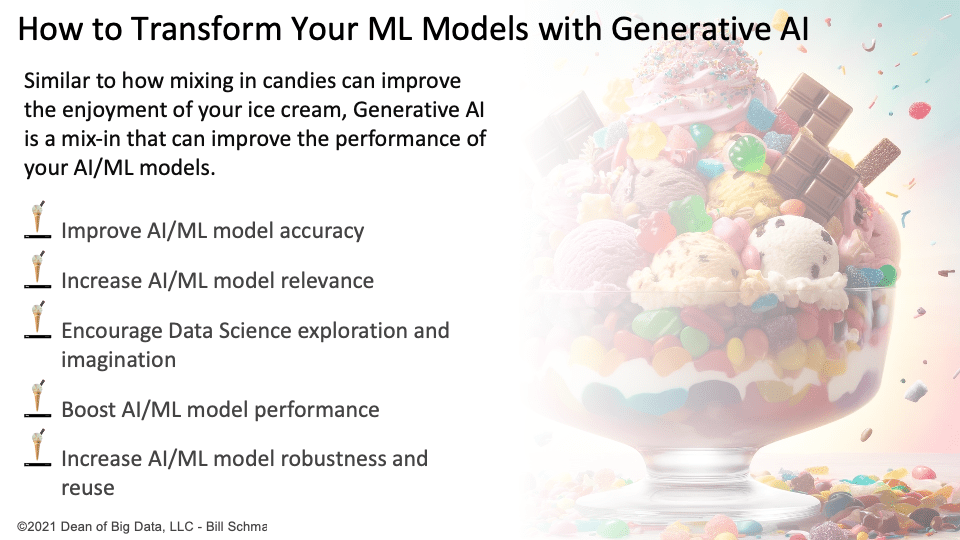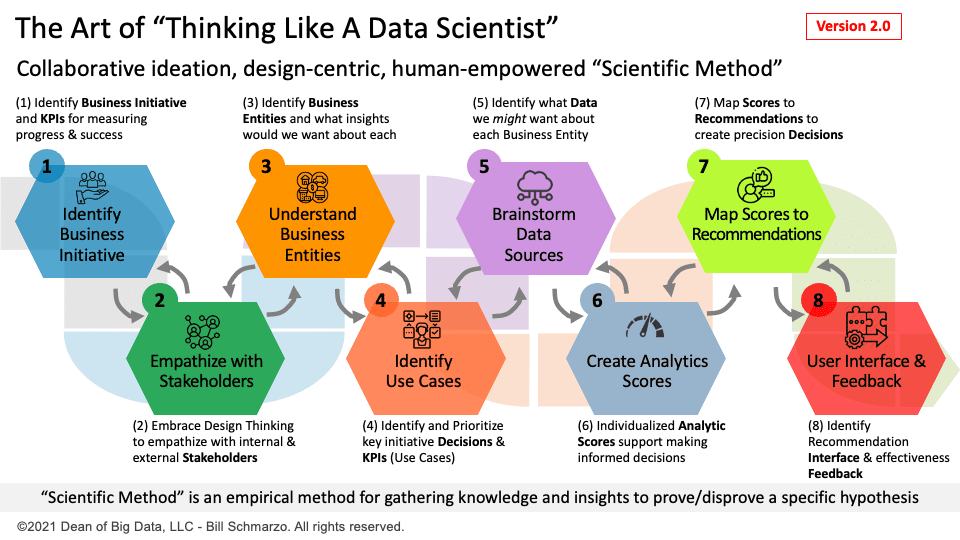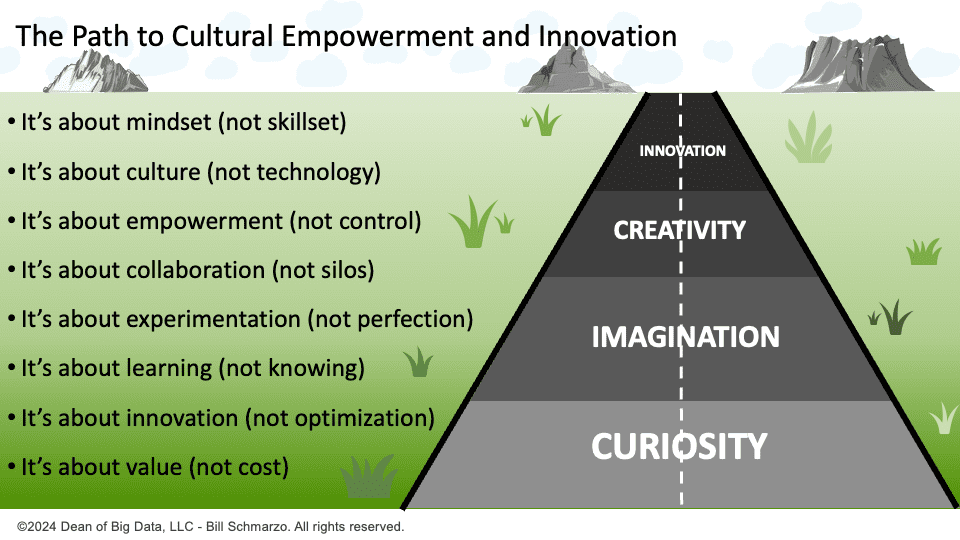
A “mix-in” is a component or feature added to an existing system or product to enhance its functionality, performance, or complexity without altering its core structure, akin to adding toppings to a dessert to enrich its flavor and appeal.
Recently, a customer mentioned their plans to implement Generative AI (GenAI) for predictive maintenance. Maybe I’m too old school, but I don’t understand how GenAI would predict the maintenance needs of critical devices and components. Traditionally, predictive maintenance relies on a mix of supervised and unsupervised machine learning (ML) algorithms. These algorithms work in tandem to analyze usage patterns and predict the likelihood of device or component failure, often captured as a predictive score. ML models identify the performance behaviors indicative of a component failure by learning from historical data, including sensor outputs, operational logs, and previous failure instances.
Yet, GenAI introduces a novel dimension to these established ML models. It can generate new content and scenarios from existing data distributions, enhancing model capabilities. While GenAI may not directly address predictive maintenance in the traditional sense, it can significantly boost the precision and efficacy of predictive maintenance ML models. This is achieved through:
- Synthetic Data Generation: One of the challenges in predictive maintenance is the lack of “failure examples” in training robust ML models, especially for critical equipment that rarely fails, such as doors falling off airplanes or nuclear power plant meltdowns. GenAI can generate synthetic data that mimics the characteristics of rare failure modes that augment the training dataset, allowing supervised models to learn from a wider variety of failure scenarios without actually having to wait for them to occur.
- Feature Engineering: GenAI can discover complex patterns in data that traditional analysis techniques may miss, which could help predict component failures.
- Anomaly Detection: GenAI can expand your ML models’ training sets by identifying deviations from normal operations that might not have been previously labeled as failure indicators.
- Operating Condition Simulation: GenAI can simulate a device’s normal operating conditions under various scenarios and compare the simulations against real-time operational data to detect early signs of performance degradation that might indicate a component failure.
GenAI can significantly boost the performance of your ML model by generating new data scenarios and simulating rare one-off scenarios, yielding the following benefits:
- Improve ML Model Accuracy: GenAI generates additional, diverse training data, helping the original AI model learn from a broader range of examples and use cases, improving its accuracy and ability to generalize from unseen data.
- Increase ML Model Relevance: GenAI can create content or scenarios tailored explicitly to the AI model’s needs, ensuring the learning material is highly relevant and directly applicable to the tasks.
- Encourage Data Scientist Exploration and Imagination: Just as mix-ins can turn a plain ice cream into an exciting dessert, GenAI encourages exploration and imagination by allowing data scientists to experiment with novel approaches and tackle problems from fresh perspectives.
- Drive ML Model Innovation: GenAI can generate synthetic data to match your target outcomes better. This enriches traditional models with new insights and capabilities, improves prediction accuracy, and fosters innovative solutions to complex problems.
- Increase ML Model Robustness and Reuse: GenAI can address imbalanced datasets and rare event prediction by enhancing data diversity and feature complexity, making models more adaptable and reusable to other use cases.
GenAI: The Human Exploration and Ideation Aide
Just like using GenAI can enhance the capabilities of traditional ML models and the data scientists who are building those ML models, humans can leverage GenAI to augment their personal and professional development and growth in the following ways:
- Augmenting Creativity: GenAI can help individuals push the boundaries of their creativity by suggesting ideas, visualizations, and solutions that might not have occurred to them. It can be a source of inspiration or a partner in creative endeavors, whether in art, design, writing, modeling, or any other creative field.
- Enhancing Decision-making: GenAI can augment human decision-making processes, especially in complex scenarios, by providing data-driven insights and simulations. It allows individuals to consider broader outcomes and factors than they might naturally account for, leading to more informed and nuanced decisions.
- Expanding Knowledge and Learning: GenAI can tailor unique, out-of-the-box learning experiences, generate educational content, and simulate scenarios for experiential learning. This personalized approach can accelerate learning and help individuals acquire new skills or knowledge more effectively.
- Improving Problem-solving: For complex or novel problems, GenAI can offer alternative solutions, uncover hidden patterns, and simulate the impact of different approaches. This can enhance human problem-solving capabilities by providing a more comprehensive array of strategies and perspectives.
- Facilitating Collaboration: GenAI can also act as a catalyst for collaboration, bridging gaps between diverse fields of expertise by translating concepts, generating common ground, and fostering a shared understanding among collaborators.
How GenAI Enhances the “Thinking Like a Data Scientist” Methodology
The “Thinking Like a Data Scientist” methodology guides users through framing questions, analyzing data, and applying models to uncover insights to make more informed decisions that deliver more relevant, meaningful, responsible, and ethical outcomes. The methodology fosters curiosity and systematic exploration, emphasizing ideation exploration and iterative learning to translate data into actionable intelligence (Figure 1).

Figure 1: The Art of Thinking Like a Data Scientist
The integration of GenAI with the “Thinking Like a Data Scientist” methodology, which is a crucial part of the next book that I am writing, represents a compelling fusion of exploration, creativity, and rigorous analytical discipline. GenAI is a transformative agent that can significantly expand the horizons of what’s possible in data science, turning the methodology into an even more powerful engine for innovation and value creation in the following areas:
- Hypothesis Testing and Exploration: Empower data scientists to test hypotheses in previously unimaginable ways. By generating synthetic data that can simulate various scenarios, conditions, and outcomes, practitioners can explore a vast landscape of possibilities without the constraints of existing datasets.
- Embracing Diverse Perspectives: Amplify understanding and integrate diverse stakeholder perspectives by providing insights and generating data that reflect many scenarios, including those that human analysts may have yet to consider.
- Challenging Conventional Thinking: Challenge conventional thinking by uncovering patterns, trends, and relationships that may not be evident through traditional analysis. It encourages users to question and rethink assumptions, offering a dynamic playground for experimentation where conventional thinking is continuously tested against AI-generated data.
- Driving Innovation Through Economies of Learning: Accelerate and enrich the iterative learning cycle with a broader array of data points and scenarios for consideration. The result is a more agile, responsive, and innovative analytical process that can adapt and evolve quickly to the uncovered insights.
- Unleashing the Natural Human Creativity: Generate novel combinations of data, scenarios, and predictions that encourage data scientists to think creatively about problem-solving, model design, and applying insights. This creative boost is essential for driving innovation, as it allows data scientists to venture beyond traditional boundaries and explore new frontiers in data analysis and application.
Summary: GenAI Creativity Mix-in
GenAI is not a replacement for your traditional ML models. Instead, it is a transformative mix-in that significantly boosts the ML models’ performance, accuracy, relevance, and reusability. Through the generation of synthetic data and intricate simulations, GenAI facilitates the exploration of a broader spectrum of scenarios, including those that are less common or entirely novel. This capability allows ML models to learn from a more comprehensive array of experiences, predicting outcomes with unmatched precision and broadening the horizons of what AI can achieve.
Similarly, GenAI acts as a catalyst for personal productivity, creativity, and innovation. It effectively amplifies our innate human qualities of curiosity, exploration, and imagination, bridging the realms of what is known and the endless possibilities of what could be. By leveraging GenAI, individuals can unlock new levels of creative thinking and innovative problem-solving, pushing the boundaries of traditional methodologies and fostering a culture of continuous discovery and growth. In essence, GenAI not only revolutionizes the landscape of ML but also redefines the parameters of human creativity and innovation (Figure 2).

Figure 2: The Path to Cultural Empowerment and Innovation
